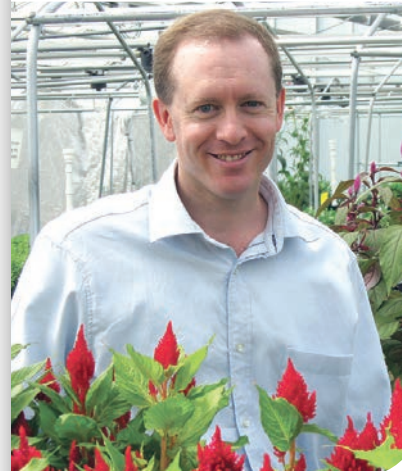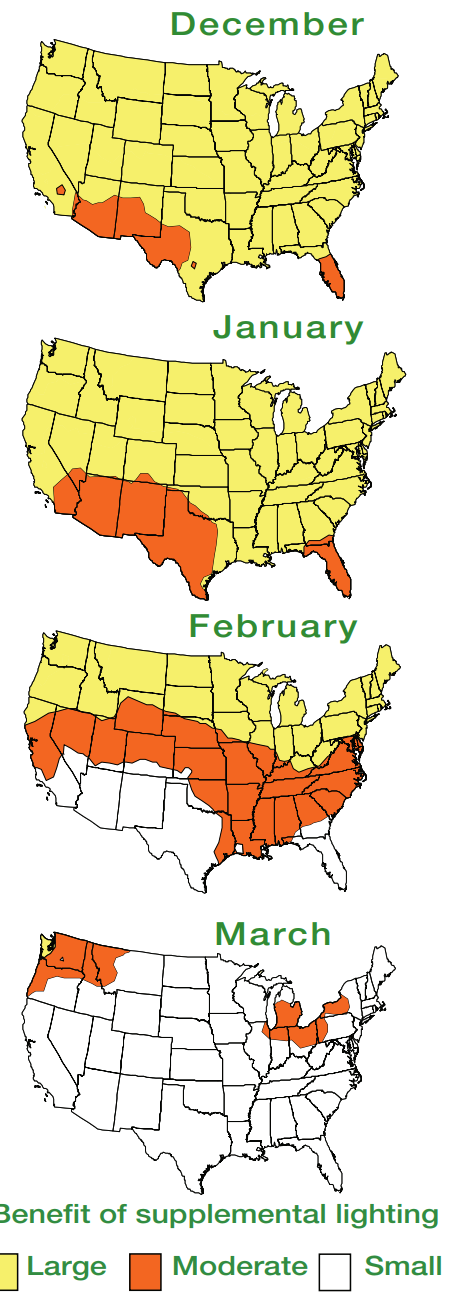
Supplemental lighting guidelines for young plants
DOWNLOADJanuary 24, 2010 - E. Runkle
technically speaking By Erik Runkle
Supplemental Lighting Guidelines for Young Plants
Recent university research has examined how plants respond to daily light integrals at different times of the year in various areas of the country.

It has long been known that, during periods of dark weather, high-intensity supplemental lighting can increase photosynthesis and plant quality of floriculture crops. However, until recently, the definition of “dark” weather was ambiguous and subjective. Research at several U.S. universities has generated specific information on how ornamental plants respond to the daily light integral (DLI).
Many young plants, particularly bedding plants and herbaceous perennials, are commercially produced from January through March. Some growers begin production even earlier, in December. During this time, the days are short, and the total quantity of light received each day is relatively low, especially in the northern United States and in Canada. Increasing the DLI with supplemental lighting can have a profound effect on the time it takes cuttings to root and plugs to become ready for transplant. In many situations, the cost of supplemental lighting of young plants is cost-effective because plant density is high, thus the lighting cost per plant is quite low.
To illustrate the relative value of supplemental lighting, I started with the DLI maps created by Jim Faust at Clemson University, assumed that 50 to 60 percent of sunlight reached plants (which is a typical value) and, based on floriculture crop research, assumed that the value of supplemental lighting was:
- large when the DLI was less than 12 mol·m-2·d-1
- moderate when the DLI was between 12 and 15 mol·m-2·d-1
- small when the DLI was greater than 15 mol·m-2·d-1
These values are based on a fairly wide body of research on high-light floriculture crops. As the maps illustrate, there is high value in providing supplemental light to young ornamental crops in December and January. In February, the value of supplemental lighting is relatively low in the Southwest, as well as most of Florida and southern Georgia. As the days get longer and the angle of the sun continues to get higher in the sky, the natural daily light integral increases. In March, especially the later half of the month, the value of supplemental lighting is moderate only in the Pacific Northwest and in the eastern Great Lakes region. By April, the value of adding light to young plants is relatively low for most species.
Supplemental lighting is most efficient when delivered by stationary high-pressure sodium lamps because they are the most efficient at converting electricity into photosynthetic light. They also emit a lot of radiation that can increase media and plant temperature, which is a benefit for growers in cold climates. For example, in a lighting study we performed in late January and early February in Michigan, high-pressure sodium lamps at an intensity of 680 foot-candles (90 μmol∙m-2∙s-1) increased the average plug media temperature by 4.3° F compared to the media of non lighted plugs.
To increase the DLI, light intensity and the duration of use are both important. Lamps are most efficiently used during periods of low light (during cloudy weather) and at night. For more information on supplemental lighting, visit the MSU floriculture website here.



 Print
Print Email
Email






